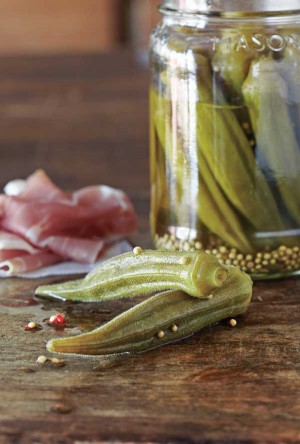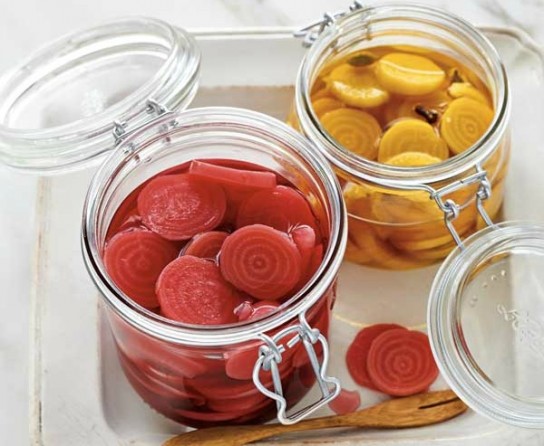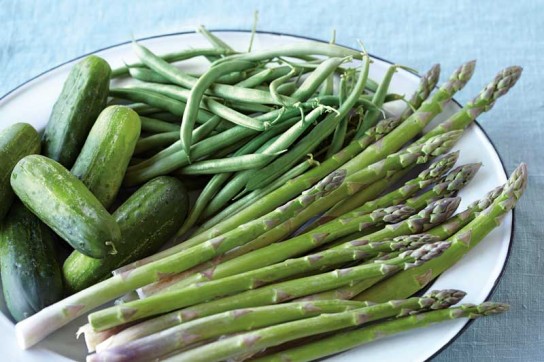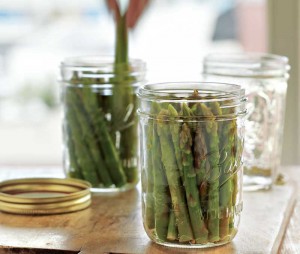Pickling season is here! For aspiring and experienced picklers alike, the following pointers offer helpful advice for every step of the pickling process. Scroll to the bottom of this post for some recipes to get you started, and visit our full guide to learn more pickling basics.
Start with a clean and tidy work area
You’ll be handling materials at high temperatures, and you’ll want to be able to move them where they need to go quickly and easily.
Don’t forget the two Fs: fresh and fast
The best pickles are made with produce picked that day or the day before. Strive to shorten the amount of time between when you pick or purchase produce and when you pickle it. Even under refrigeration, vegetables lose structure and texture, and no one likes a soft pickle.
Use aromatic spices and herbs
If you’re planning a series of canning sessions, make sure your seasonings are stored in airtight containers from one session to the next.
Measure ingredients carefully
Let’s say you’re making a pickle that calls for adding 1 teaspoon cayenne pepper. There’s a big difference between a level teaspoon and a heaping teaspoon, and this difference will play out even more as the finished, sealed jars rest and the ingredients mingle and their flavors develop.
While it can be tempting to do so, don’t overpack your jars. Depending on which vegetables you’re pickling, jamming too many into a jar can create a situation where you won’t be able to extract the contents once the jar is processed because the vegetables are so tightly packed. Additionally, pasteurizing depends on brine circulation, so you’ll want to leave enough space for the brine to move freely in the jar.
Take your time with the brine
When adding the brine, pour to the fill line, then agitate the jar, shaking it laterally, to let the brine settle — then top it off if necessary. Make sure to top off the brine, cap the jars and start to process within 5 minutes.
Don’t multitask while processing
When you’re pickling, a certain amount of multitasking goes on — you might be packing jars while simmering the brine. But when it comes to processing, focus on the timing. If your processing time is off by a few seconds don’t fret. Just keep in mind that timing is specific for a reason.
Pickling is a handmade process
Even as you strive for consistency and work toward making the best possible pickle, it’s natural and normal for batches to be slightly different from one to the next.
 There are no bad pickling experiments
There are no bad pickling experiments
Trial and error is the best way to expand your repertoire. Have fun with it and don’t forget that you can pickle almost anything!
Think of your pickles as works of art
Finished pickles will draw gratitude and enthusiastic compliments from your friends as they examine the vegetables, herbs and spices artfully arranged inside the jars. You’ll soon discover that bringing a jar of homemade pickles to a party as a gift is greatly appreciated.
Try these pickling recipes from Williams-Sonoma:




4 comments
These are great tips, especially for a new fermenter! The first time I made sauerkraut, I was so nervous and intimidated; it didn’t turn out the best, but I learned a lot from it. Now I’ve gotten more adventurous, and I can honestly say that I use every time as a learning experience, have dropped my expectations a bit, and my foods have come out better. I totally second the “don’t multi-task” tip- you should focus on what you’re doing to make sure your acid ratio is correct, otherwise you may end up with an unpleasant batch!
[…] See all the 10 Tips for Summer Pickling here. […]
[…] Tips from a Pickling Professional […]
I am still new at canning my pickles, did a bunch when living in Ct. years ago. I put my liquid in the jars , lids on then put jars in pan of boiling water. You say in your directions to put jars in pan of water then bring to a boil. I just want to do the right thing for my family and pickles. Help.
Thank you, jenny